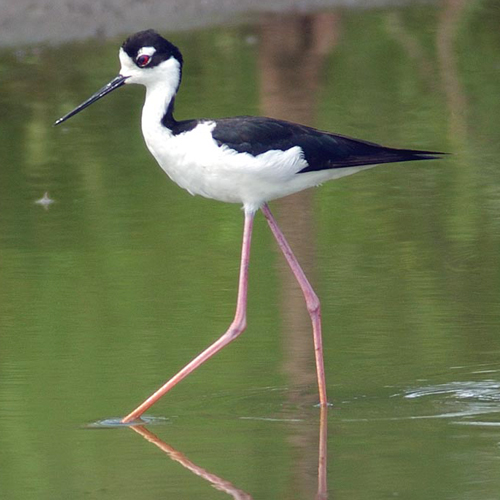General Description
With its black and white plumage, long, thin red legs, and long neck, the Black-necked Stilt is both striking and delicate in appearance. It is a medium-sized shorebird with a black needle-like bill, black or dark brown upperparts, and a white breast. The iris is red, and there is a white spot above the eye. Breeding males have glossy black wings, back, and back of neck, and a pink tinge on the breast. Non-breeding males lack the glossiness and pink tinge. Adult females have a brown tinge to the back. Juveniles have brown upperparts with buff feather margins, and a white trailing edge to the wing in flight.
Black-necked Stlits are Rare in Western Washington from April-June.Habitat
Black-necked Stilts are found on the margins of shallow inland ponds and lakes in open country. They are often associated with American Avocets, but will also use wetlands with more emergent vegetation such as flooded fields. During migration, Black-necked Stilts may visit coastal mud flats.
Behavior
Black-necked Stilts are gregarious. They spread out while foraging and roost in small groups. Although during the breeding season and in winter, Black-necked Stilts are strongly territorial, the territories are aggregated, and adults will participate jointly in anti-predator displays; thus, there is some degree of coloniality. An anti-predator display called 'the popcorn display' consists of a group of adults encircling a ground predator and hopping side to side while flapping their wings. They forage visually by wading through the water and picking prey from at or near the surface. Black-necked Stilts often call loudly and incessantly when agitated.

No comments:
Post a Comment